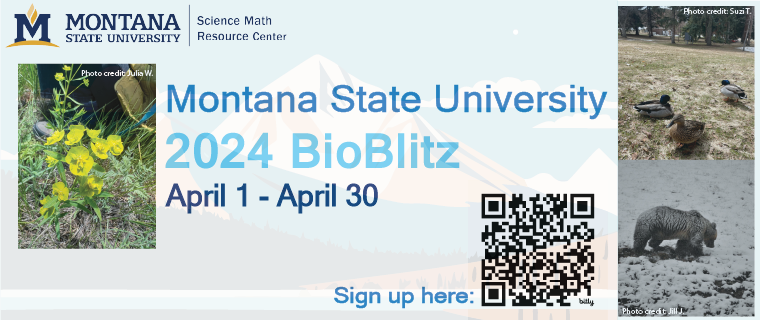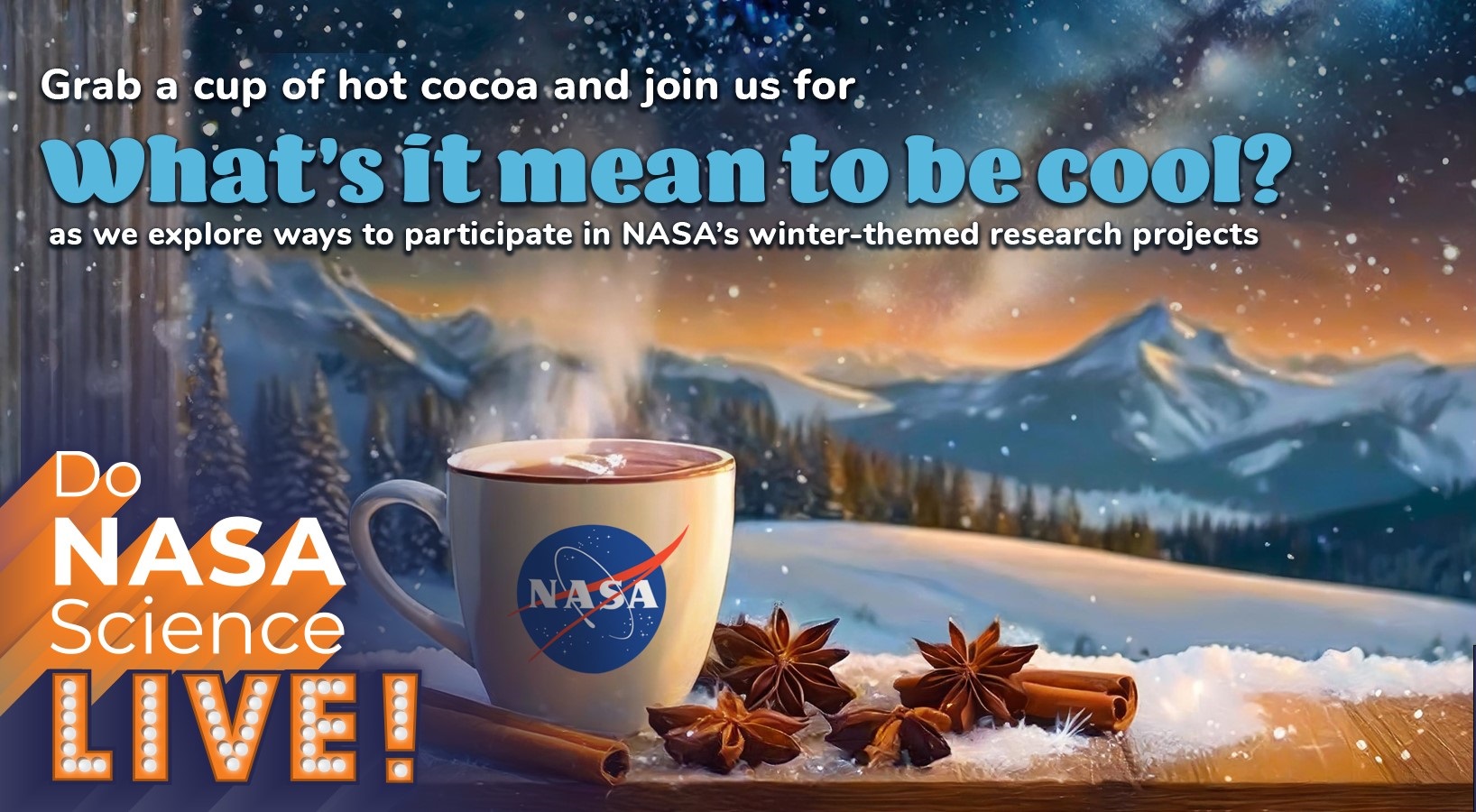MSU Citizen Science Network
Join the MSU Citizen Science NetworkSign up for our quarterly e-newsletter to learn about citizen science projects from MSU, around Montana or across the nation, to learn about events and opportunities. You can also email us at [email protected] Archived newsletters:December 2023: Free kits for teachers and libraries, Christmas bird count & more! Fall 2023 // Summer 2023 // April 2023 - Citizen Science Month, Part 1 // April 2023 - Citizen Science Month, Part 2 // 2022 Year in Review // September 2022 // March 2022 // December 2021 // May 2021 |
New to citizen science? Watch our intro video
Recent News
April 2024 BioBlitz

Join the MSU Science Math Resource Center in celebrating International Citizen Science Month and learn more about Montana biodiversity! We're on a mission to collect as many sightings of local wildlife, including wild animals, plants, and fungi, as we can.
This project is open to participants throughout the state, just be sure to become a member of the project. Note: You'll need to register for a free account on iNaturalist and download the mobile app if you want to submit photos directly from your phone. The photos that you take that "need ID" or are "research grade" will be added automatically to this project. For more information on how to submit your photos, identifying your sightings, geotag your observations, etc., check out the iNaturalist tutorial page.
To join our team, simply follow the QR code above or check out the iNaturalist project webpage.
For more information, please contact Julia Wente, SMRC’s Program Coordinator.
Join SMRC, NGCP and SciStarter for a free Citizen Science Month Webinar on April 30, 2024
Citizen science is open to ALL and involves curious people whose individual acts contribute to a collective impact that is accelerating scientific research, discoveries, and local actions that improve the world. From sharing photos of nature to help scientists document biodiversity to browsing images on your computer to help speed up research about Alzheimer's disease, each of these acts of science is important.
Join the Science Math Resource Center, National Girls Collaborative Project andSciStarter for this exciting webinar to hear examples of citizen science projects, gain ideas and resources for getting involved with projects, and learn how girls and other groups historically marginalized in science can benefit from participation in these programs. We hope you will join us to celebrate Citizen Science Month (April 2024), work to broaden participation in the sciences and support scientific research!
It would be great to have lots of Montanans in the audience -- register here today!
SMRC featured in SciStarter/NASA live stream (Feb. 2024)
 The Science Math Resource Center was a featured volunteer during a Feb. 21, 2024 live-streamed
event by SciStarter and "Do NASA Science Live" called What's It Mean to be Cool? This free virtual event featured five NASA scientists who describe their research
and associated winter-themed citizen science projects.
The Science Math Resource Center was a featured volunteer during a Feb. 21, 2024 live-streamed
event by SciStarter and "Do NASA Science Live" called What's It Mean to be Cool? This free virtual event featured five NASA scientists who describe their research
and associated winter-themed citizen science projects.
Discover how to fill important data gaps in understanding what “cold” means on Earth AND in space. Sometimes cold is relative and the coldest objects in space—still warmer than Jupiter– are vital for teaching us about how stars and planets form. We heard from the researchers behind: Mountain Rain or Snow, Fresh Eyes on Ice, Backyard Worlds: Cool Neighbors, GLOBE Observer Land Cover, and The Sungrazer Project.
Learn more about the event on SciStarter
Watch the recording on YouTube
Presentation to Osher Lifelong Learning Institute (Feb. 2024)
 On Monday, Feb. 7, 2024. the Science Math Resource Center presented on citizen science to members of the Osher Lifelong Learning Institute (OLLI) in Hager Auditorium at the Museum of the Rockies. The crowd of approximately 100
learned about the history of citizen science; projects and how to find them; and current
movements, such as environmental justice and citizen science. We also addressed adjacent
activities, including geocaching and NASA AREN - the AEROKATS and ROVER Education Network, which uses kite-borne instruments to
collect data about our Earth and is often used in conjunction with GLOBE Observer
for citizen science observations.
On Monday, Feb. 7, 2024. the Science Math Resource Center presented on citizen science to members of the Osher Lifelong Learning Institute (OLLI) in Hager Auditorium at the Museum of the Rockies. The crowd of approximately 100
learned about the history of citizen science; projects and how to find them; and current
movements, such as environmental justice and citizen science. We also addressed adjacent
activities, including geocaching and NASA AREN - the AEROKATS and ROVER Education Network, which uses kite-borne instruments to
collect data about our Earth and is often used in conjunction with GLOBE Observer
for citizen science observations.
View all the resources from the talk here.
Citizen Science 101 resource
We'd like to extend a big thank you to the Lakeville Nature Conservancy for sharing a useful resource! Citizen Science 101: How Anyone Can Contribute to Scientific Research and Development highlights leading citizen scientists in history, resources for finding potential projects and tips to get involved yourself.
The Lakeville Nature Conservancy works to improve their community through working with nature and educating the public to be more eco-friendly. Thanks for all the work you do, Ms. Garcia & Katrina, Elizabeth, Julia, and Chris!
News Archive
Questions? Would you like to be involved in future citizen science efforts?
Contact Suzi Taylor and Julia Wente with Science Math Resource Center at [email protected] and [email protected].
